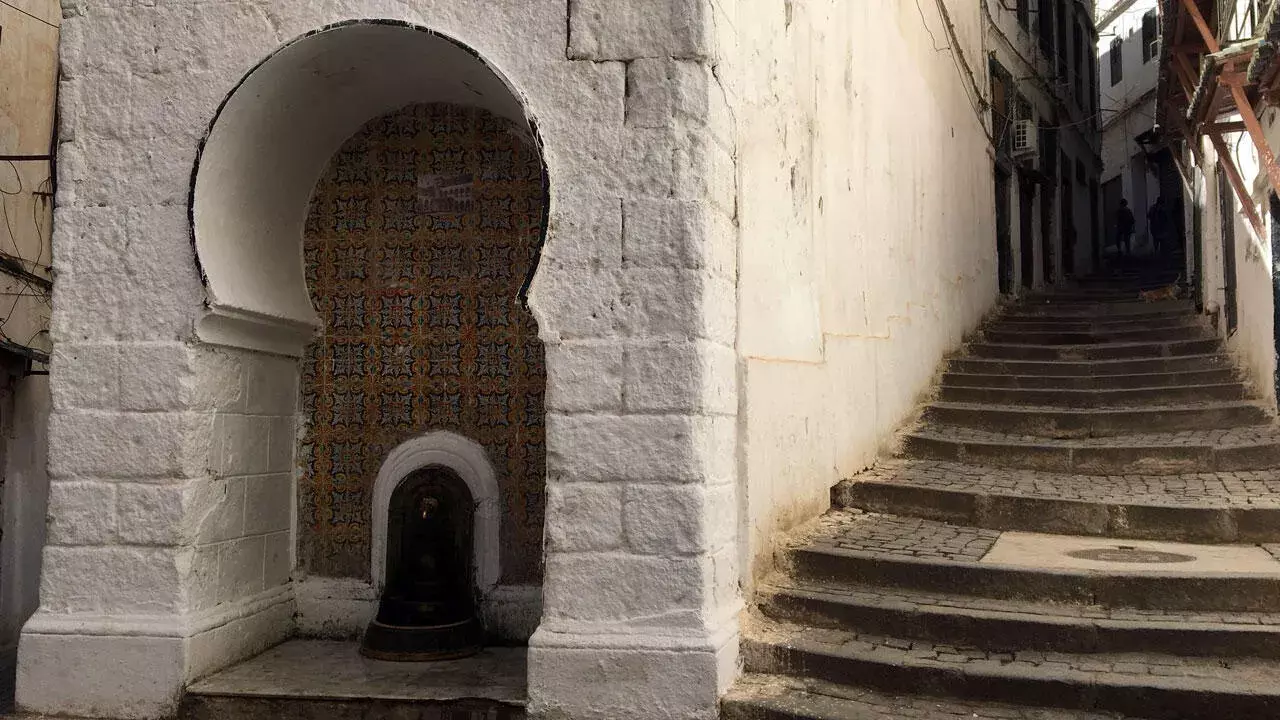
Casbah of Algiers
Overall Rating: ⭐⭐⭐⭐☆ (4/5)
Rating Breakdown:
✔ Historical Significance – ⭐⭐⭐⭐⭐ (5/5)
✔ Cultural Impact – ⭐⭐⭐⭐⭐ (5/5)
✔ Atmosphere & Maintenance – ⭐⭐⭐☆☆ (3/5)
✔ Accessibility – ⭐⭐⭐☆☆ (3/5)
✔ Tourist-Friendly – ⭐⭐⭐☆☆ (3/5)
Weather
- Mediterranean climate – warm, dry summers and mild, wet winters.
Tags
- Historical Site, UNESCO World Heritage Site, Cultural LandmarkFreepik+10Pinterest+10Discover the World with Evendo+10
Timings
- Open to the public year-round; no specific operating hours.
Time Required
- 2 – 4 hours, depending on depth of exploration.
Entry Fee
- No entry fee for general exploration; some specific sites within may have individual charges.
Things to See & Do
- Explore Narrow Alleys – Wander through the labyrinthine streets showcasing traditional Algerian architecture.
- Visit Historical Mosques – Discover ancient mosques such as Ketchaoua Mosque.UNESCO World Heritage Centre+3Alamy+3Freepik+3
- Admire Ottoman-Era Palaces – View palaces reflecting Ottoman architectural influence.
- Experience Local Culture – Engage with artisans and observe traditional crafts.
- Enjoy Panoramic Views – Capture scenic vistas of the Mediterranean Sea from elevated points.
Best Time to Visit
- Spring (March to May) and autumn (September to November) offer pleasant weather for walking tours.
Nearest Parking Spots
- Limited parking available around the perimeter; public transportation or taxis are recommended.
Overview
- The Casbah of Algiers is a historic medina and UNESCO World Heritage Site, renowned for its unique Islamic city structure.
- Perched on a hillside overlooking the Mediterranean, it features a maze of narrow streets, traditional houses, and significant landmarks.
- The Casbah embodies the rich history and cultural heritage of Algiers, reflecting influences from various periods, including Carthaginian, Roman, and Ottoman eras.
- Ketchaoua Mosque – A historic mosque exemplifying Ottoman architecture.
- Citadel (Kasbah) – The fortress offering insights into the city's military history.
- Palais des Raïs – A complex of Ottoman-era palaces now serving as a cultural center.
- Established on the ruins of the ancient Phoenician trading post of Icosium, the Casbah has evolved through centuries, witnessing Roman, Islamic, and Ottoman influences. Its strategic coastal position made it a significant center for trade and governance. In 1992, UNESCO recognized the Casbah for its historical and cultural value.
- The Casbah showcases a blend of Berber, Islamic, and Ottoman architectural styles. Its urban fabric consists of white-washed houses, intricate courtyards, and terraced rooftops cascading down towards the sea. The labyrinthine alleys and sabat (arched passageways) reflect traditional Maghrebian medina designs.
- Guided Tours Recommended – Due to its complex layout, hiring a local guide can enhance the experience and provide historical context.
- Wear Comfortable Footwear – The steep and uneven streets require sturdy walking shoes.
- Stay Hydrated – Carry water, especially during warmer months.
- Respect Local Customs – Dress modestly and be mindful of residents' privacy.
- Safety Precautions – While generally safe, it's advisable to stay alert and avoid less frequented areas.
- Location – Central Algiers, easily accessible from various parts of the city.
- By Taxi – Widely available; ensure the driver is familiar with the Casbah's entry points.
- By Public Transport – Buses and the metro serve nearby areas; however, services may vary.
- On Foot – For those staying in central Algiers, the Casbah is within walking distance.